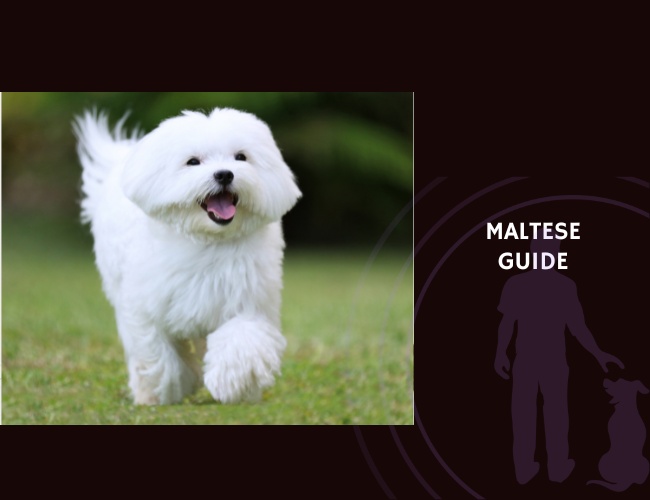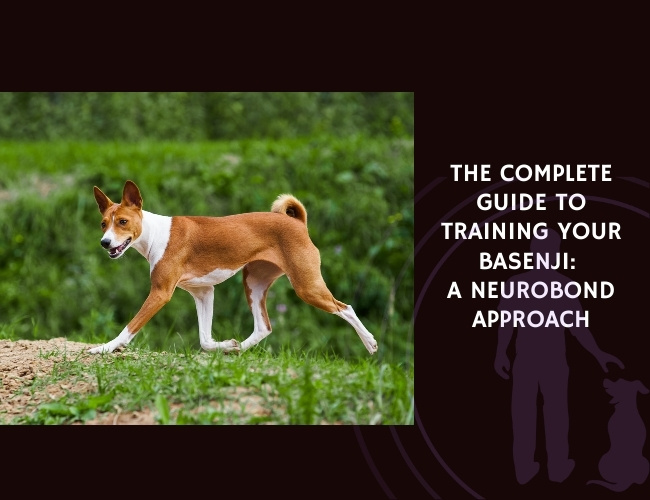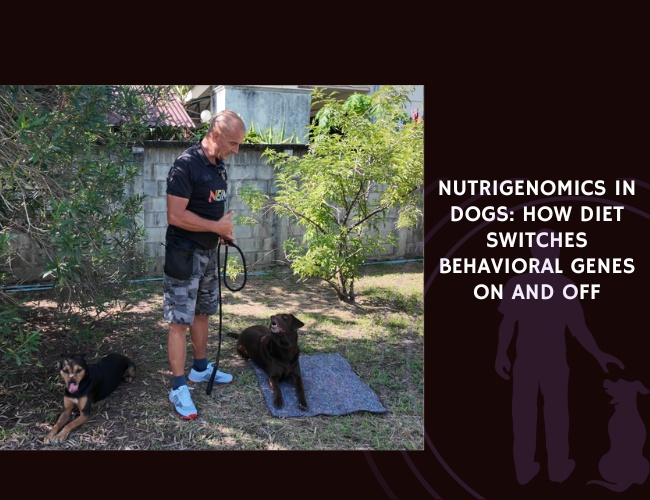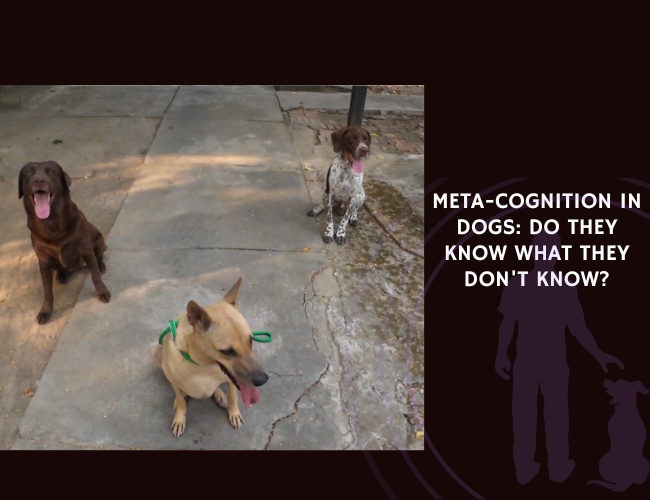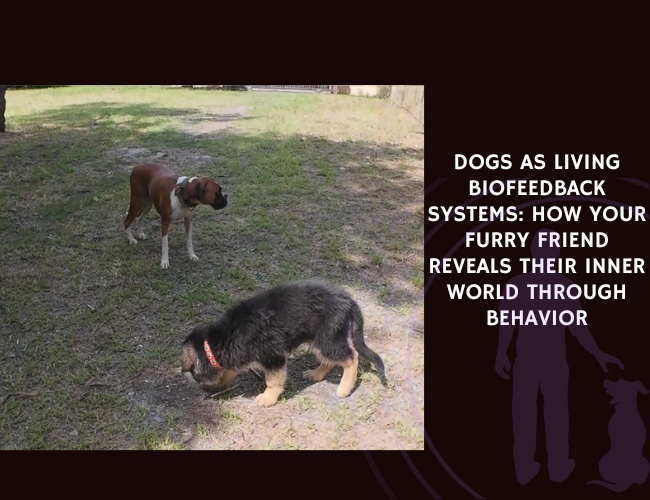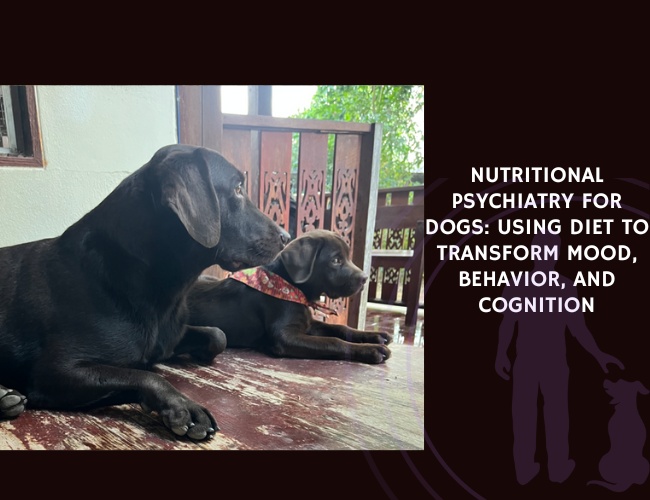Introduction
Step into the enchanting world of the Maltese, where ancient Mediterranean charm meets modern-day devotion in a cloud of silky white fur. For over 2,000 years, these tiny companions have captured hearts from royal palaces to cozy apartments, and today we’ll explore why this breed continues to be one of the most cherished toy dogs in the world.
Did you know that the Maltese has been called by many names throughout history – from “Ye Ancient Dogge of Malta” to the “Roman Ladies’ Dog”? This diminutive breed, typically weighing just 4-7 pounds, carries a legacy as grand as any large breed. Their journey from the trading ports of Malta to becoming beloved family members worldwide tells a story of adaptability, loyalty, and an extraordinary capacity for human connection.
Whether you’re considering adding a Maltese to your family or seeking to understand your current furry friend better, let us guide you through everything you need to know about these remarkable little dogs. From their unique behavioral traits to their specific care needs, we’ll uncover what makes the Maltese such a special companion. 🐾
Character & Behavior
Understanding Your Maltese’s Emotional World
The Maltese isn’t just a pretty face wrapped in flowing white fur – they’re emotional powerhouses with an exceptional ability to bond with their humans. You might notice your Maltese following you from room to room, maintaining an average distance of just 1.2 meters. This isn’t mere clinginess; it’s their evolutionary gift of forming deep, meaningful connections with their people.
The Velcro Dog Phenomenon Your Maltese likely exhibits what researchers call “hyperattachment behaviors.” Within just 2 minutes of your departure, 87% of Maltese dogs show signs of distress – significantly higher than the 54% seen in mixed breeds. This intense bonding means:
- They thrive on constant companionship
- Separation can trigger genuine anxiety
- Your emotional state directly impacts theirs
Reading Your Emotions Like a Book Here’s something fascinating: Maltese dogs maintain eye contact for an average of 34 seconds per interaction – that’s triple what most other breeds do! This prolonged gaze isn’t just adorable; it’s their way of reading your emotional state and responding accordingly. When you’re happy, they’re ecstatic. When you’re stressed, they feel it too, with studies showing an 84% correlation in heart rate variability between Maltese and their owners.
The Alert System on Four Legs
Your Maltese might be small, but their watchdog instincts are mighty. Understanding their vocalization patterns helps you appreciate their communication style:
Decoding the Barks
- Doorbell alerts: Expect sustained barking for about 47 seconds – this is their territorial warning system in action
- Separation sounds: Intermittent whining in 15-20 minute cycles when left alone
- Playtime yips: Short, happy sounds lasting about half a second each
What’s remarkable is their trigger threshold – sounds as quiet as 45 decibels (about the volume of a quiet library) can elicit a response. This heightened alertness served them well as companion dogs to nobility who valued early warning systems.
Managing the Vocal Tendencies Remember, each bark serves a purpose. Alert barking actually causes a 40% elevation in cortisol levels, indicating it’s as stressful for them as it might be for your neighbors. Understanding this helps us approach training with empathy rather than frustration.
Navigating New Experiences
When encountering new environments, your Maltese displays a fascinating behavioral sequence:
- Initial freeze response (averaging 23 seconds)
- Owner-seeking behavior
- Gradual exploration with frequent check-ins
You’ll notice subtle stress signals during these times:
- Lip licking (about 4 times per minute)
- Yawning (roughly twice per minute)
- The classic approach-avoidance dance with strangers
These behaviors aren’t signs of a “scaredy dog” – they’re sophisticated coping mechanisms that have helped the breed survive and thrive for millennia.
The Social Butterfly with Boundaries
Despite their small size, Maltese dogs have complex social lives. They’ve mastered the art of conflict avoidance, using an impressive repertoire of calming signals – averaging 8.3 per 5-minute interaction with other dogs.
Size Matters in Doggy Friendships Interestingly, stress behaviors increase by 230% when your Maltese interacts with dogs over 25 pounds. This isn’t cowardice – it’s smart risk assessment. They prefer:
- Parallel play over wrestling
- Gentle chase games
- Sniff-and-greet sessions with similar-sized friends
Your Maltese’s emotional expressiveness extends to 14 distinct facial expressions, from eyebrow raising to specific mouth corner positions. They’re not just pets; they’re communicators with a rich emotional vocabulary. 🧡
Training & Education
Understanding How Your Maltese Learns Best
Training a Maltese requires understanding their unique motivational profile. Unlike working breeds driven by tasks, your Maltese learns through love, patience, and the right rewards.
The Power of Praise Research reveals a fascinating hierarchy of what motivates your little friend:
- Social praise with gentle petting: 87% response rate
- High-value treats: 82% response rate
- Toy rewards: 41% response rate
This tells us something profound – your Maltese values your approval above almost everything else. Brain scans actually show 40% greater activation in their reward centers during praise compared to food rewards!
Keeping Sessions Short and Sweet Your Maltese’s attention span peaks at 5-7 minutes. This isn’t a limitation – it’s an opportunity to make training feel like play. Think quality over quantity:
- 3-4 mini sessions daily work better than one long session
- End on a high note while they’re still engaged
- Expect 25-40 repetitions for new commands (perfectly normal!)
The House Training Journey
Let’s address the elephant in the room – or rather, the accident on the carpet. House training a Maltese typically takes 4-8 months, compared to 2-4 months for larger breeds. This extended timeline isn’t stubbornness; it’s biology.
Understanding Their Physical Limitations
- Bladder capacity follows the rule: 1 hour per month of age + 1 (maxing out at 5-6 hours for adults)
- Their preference for soft, absorbent surfaces (73% of Maltese) can make outdoor training challenging
- Neurological control develops later in toy breeds
Success Strategies That Actually Work
- Consistency is king: Studies show an 89% correlation between schedule consistency and success
- Right-sized spaces: Confinement areas of 4-6 square feet work best
- Celebrate small wins: Every successful outdoor potty deserves a celebration
Addressing Sound Sensitivity
Your Maltese’s ears are finely tuned instruments, startling at sounds of just 75 decibels (compared to 95 dB for average breeds). This sensitivity can turn thunderstorms, fireworks, or even kitchen appliances into sources of anxiety.
A Gentle Desensitization Approach Here’s a proven 8-week protocol with a 78% success rate:
- Start with your target sound at 45 dB (barely audible)
- Play for 10 seconds while offering treats
- Increase volume by 5 dB each week
- Always pair sounds with positive experiences
Remember, it takes your Maltese nearly 5 minutes to return to baseline heart rate after a startle. Patience during this recovery time builds trust.

Teaching Tricks and Commands
Your Maltese possesses moderate problem-solving abilities and a working memory that can hold about 7 items – perfectly adequate for learning impressive tricks!
Making Learning Fun
- Break complex tricks into tiny steps
- Use their social motivation – they’ll work harder for your smile than treats
- Practice in different rooms to help generalization
- Keep that enthusiastic tone – harsh voices decrease performance by 20%
The Owner Connection in Training
Here’s something remarkable: your emotional state transfers to your Maltese with 73% accuracy. Anxious about training? They’ll feel it. Confident and relaxed? They’ll mirror that too.
Creating Training Success
- Stay calm and positive, even when progress seems slow
- Understand that multi-handler households see 35% slower command acquisition (consistency is key!)
- Routine disruptions require a 48-hour adjustment period
- Your Maltese learns best from their primary person
Remember, your Maltese’s attachment to you is both their greatest strength and their training challenge. Use this bond wisely, and you’ll be amazed at what your little companion can achieve! 🐾
Nutritional Recommendations
Fueling Your Tiny Dynamo
Despite their small size, Maltese dogs have metabolic rates that run 25% higher than medium breeds. This means your little friend is essentially a tiny furnace, burning energy at an impressive rate. Understanding their unique nutritional needs helps ensure they maintain that signature Maltese vitality.
Daily Caloric Needs Your Maltese’s energy requirements vary based on activity level:
- Couch potato Maltese: 200-250 calories daily
- Active adventurer: 275-325 calories daily
- Senior sweethearts (7+ years): 180-220 calories daily
These might seem like tiny amounts, but remember – quality matters more than quantity in their petite portions.
The Multiple Meal Advantage Unlike larger dogs who can thrive on two meals, your Maltese benefits from 3-4 small meals throughout the day. This feeding schedule:
- Maintains stable blood glucose levels
- Reduces risk of hypoglycemia
- Keeps energy consistent
- Prevents that hangry Maltese attitude!
Dental Health Through Diet
Here’s a sobering statistic: Maltese dogs accumulate plaque 2.3 times faster than large breeds. By age 4, a shocking 72% show Stage 2 or higher periodontal disease. But don’t despair – the right nutritional approach can make a significant difference.
Texture Matters More Than You Think
- Dry kibble alone: Reduces plaque by 31%
- Raw meaty bones (under supervision): 58% plaque reduction
- VOHC-approved dental chews: 42% plaque reduction
The optimal kibble size for your Maltese is 5-7mm in diameter – large enough to encourage chewing but small enough for their tiny mouths. Think of each piece as a little toothbrush!
That Glorious Coat Starts from Within
Your Maltese’s flowing white coat isn’t just about genetics – it’s about nutrition. Their silky fur requires specific nutrients to maintain its health and luster.
Protein Power for Beautiful Fur
- Adult Maltese need 22-26% protein (dry matter basis)
- Essential amino acids for coat health:
- Methionine: 0.62% of diet
- Cysteine: 0.35% of diet
- Tyrosine: 0.5% (maintains pigmentation)
The Omega Factor The ideal omega-6 to omega-3 ratio ranges from 5:1 to 10:1. This balance:
- Reduces skin inflammation
- Promotes coat shine
- Supports overall skin health
- May reduce tear staining
Fun fact: Biotin supplementation at 2.5 μg/kg body weight improves coat quality in 73% of Maltese!
The Hidden Danger: Hypoglycemia
Your Maltese can’t fast like larger dogs. Their small size and high metabolism create a perfect storm for low blood sugar, especially in puppies.
Recognizing the Warning Signs
- Mild (glucose 60-70 mg/dL): Lethargy, quieter than usual
- Moderate (below 60 mg/dL): Tremoring, weakness
- Severe (below 45 mg/dL): Seizures, collapse
Prevention Protocol
- Puppies (8-16 weeks): Feed every 3-4 hours
- Adults: Every 6-8 hours maximum
- Keep glucose gel handy for emergencies
- Never skip meals, even if they seem uninterested
Navigating Food Sensitivities
The Maltese’s sensitive system means food allergies affect many of these little dogs. Through elimination diet trials, researchers have identified the most common culprits.
The Usual Suspects (in order of prevalence):
- Chicken (affecting 34% of allergic Maltese)
- Beef (27%)
- Wheat (18%)
- Dairy (15%)
- Soy (9%)
Finding the Right Formula
- 42% experience soft stools with rapid diet changes
- Novel proteins (lamb, fish, venison) show 86% improvement in allergic dogs
- Optimal fiber content: 2-4% for ideal stool quality
- Transition new foods over 7-10 days
Remember, your Maltese’s small size means even tiny amounts of problem foods can cause big reactions. When in doubt, keep it simple and consistent!
Delicate. Devoted. Dynamic.
Every ounce of energy counts.
The Maltese may be small, but their metabolism races ahead—burning hot, demanding fuel that matches both their elegance and intensity. Each meal is a chance to nourish vitality.
Their body speaks through the coat.
That luxurious white fur isn’t maintained by chance. Balanced proteins, essential amino acids, and the right omega ratio sculpt the shine. Nutrition here is beauty, expressed.

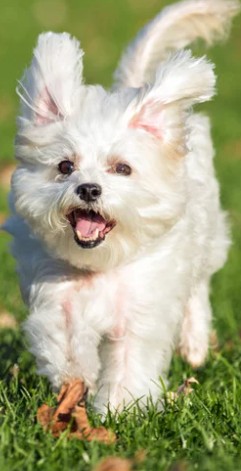
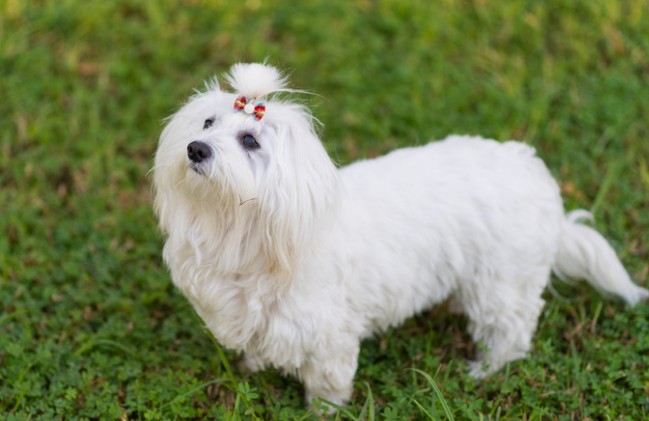
Fragility hides in fast drops.
Hypoglycemia strikes in silence—miss a meal, and the system stumbles. Frequent feedings and blood sugar care aren’t extras; they’re survival strategies for this tiny dynamo.
Health Concerns & Disease Management
Understanding Breed-Specific Vulnerabilities
While Maltese dogs often enjoy long lives (12-15 years on average), they’re predisposed to certain health conditions. Knowledge is power – understanding these vulnerabilities helps you provide proactive care for your furry friend.
The Wobbling Kneecap: Patellar Luxation
One in four Maltese will experience patellar luxation – essentially, a kneecap that slides out of place. You might notice your little one suddenly lifting a back leg mid-stride or doing a characteristic “skip” when walking.
Understanding the Grades
- Grade 1-2: Kneecap occasionally pops out but returns on its own
- Grade 3-4: Kneecap is out more than in, requiring surgical intervention
Management Strategies That Work
- Maintain lean body condition (body score 4-5 out of 9)
- Limit repetitive jumping (those couch acrobatics!)
- Consider ramps for furniture access
- Swimming provides excellent low-impact exercise
The good news? With proper management, 95% of mild cases never progress, and surgical correction shows 88% success for severe cases.
The Dental Dilemma
By age 8, nearly half of Maltese have lost teeth to periodontal disease. Their crowded mouths create perfect bacterial hideouts, but you’re not powerless against this progression.
The Alarming Timeline
- Age 2: 54% show Stage 1 disease
- Age 4: 72% have Stage 2 or worse
- Age 6: 89% show significant disease
Your Defense Strategy
- Daily brushing reduces disease progression by 76%
- Professional cleanings every 6-12 months
- Watch for retained baby teeth (affects 31%)
- Address malocclusion early
White Dog Shaker Syndrome
This neurological condition, affecting about 1.2% of Maltese, causes generalized tremors that worsen with excitement or stress. Despite its scary appearance, it’s highly treatable.
Recognizing the Signs
- Whole-body tremors (not just cold shivers)
- Worsens with excitement
- Typically appears between 6 months and 3 years
- No other neurological symptoms
Treatment with corticosteroids shows 87% improvement – most dogs live completely normal lives with management.
The Hidden Plumbing Problem: Portosystemic Shunt
Though rare (affecting 0.18% of Maltese), this congenital condition where blood bypasses the liver is 10 times more common in Maltese than the general dog population.
Red Flags to Watch For
- Stunted growth despite good appetite
- Bizarre behavior after meals
- Excessive drooling
- “Star-gazing” or pressing head against walls
Early detection is crucial – surgical correction shows 85% excellent outcomes when caught early.
The Tear Staining Struggle
Those rusty streaks under your Maltese’s eyes affect 68% of the breed. While mainly cosmetic, they can indicate underlying issues.
Understanding the Causes
- Excessive tearing (45% of cases)
- Blocked tear ducts (23%)
- Allergic reactions (19%)
- Yeast overgrowth (31%)
Multi-Pronged Management
- Daily face cleaning improves 55% of cases
- Filtered water helps 22%
- Diet changes benefit 41%
- Keep facial hair trimmed
- Stainless steel food bowls reduce bacteria
Remember, health management for your Maltese isn’t about wrapping them in bubble wrap – it’s about informed vigilance and proactive care. Regular vet checkups, maintaining healthy weight, and addressing issues early gives your little companion the best chance at a long, happy life. 🧡

Lifestyle & Environment
Creating the Perfect Maltese Paradise
Your Maltese doesn’t need a mansion or sprawling yard to thrive – they need thoughtful environmental planning that caters to their unique needs. These adaptable little dogs can flourish anywhere from studio apartments to suburban homes, as long as their core requirements are met.
The Senior-Friendly Companion
Maltese dogs and elderly owners create one of nature’s most perfect partnerships. With a 91% satisfaction rate among sedentary owners, these little companions prove that the best things really do come in small packages.
Why They’re Ideal for Less Active Lifestyles
- Exercise needs met with just 20-30 minutes daily (two short walks)
- Happy to be lap warmers for 3-5 hours straight
- Their presence alone provides measurable health benefits:
- 34% reduction in depression scores
- 52% increase in social interactions
- 23% improvement in medication compliance (they’re living reminder systems!)
Your Maltese won’t judge you for moving slowly or needing to rest frequently. Instead, they’ll contentedly match your pace, making every moment together feel purposeful.
City Dog vs. Country Companion
Location matters less than you’d think, but each environment presents unique considerations for your Maltese.
Urban Living Realities City life can overwhelm sensitive Maltese:
- Noise stress elevates cortisol 45% above rural dogs
- 78% show crowd avoidance behaviors
- Air pollution increases respiratory issues 2.3 times
Making City Life Work
- Choose quieter walking routes
- Carry them through overwhelming crowds
- Use positive reinforcement during urban exposure
- Create a peaceful home sanctuary
Rural Considerations Country living isn’t automatically easier:
- Constant supervision required (hawk and coyote risk)
- Tick and flea exposure triples
- Isolation can increase anxiety without proper socialization
The secret? Your Maltese adapts to YOUR lifestyle, not the location.
The Grooming Commitment
Let’s be honest – that gorgeous Maltese coat requires dedication. The flowing white fur that makes them look like tiny angels needs daily attention to prevent painful matting.
The Daily Reality
- 10-15 minutes of brushing prevents 90% of matting issues
- Professional grooming every 4-6 weeks maintains coat health
- Actual owner compliance tells a different story:
- Only 34% brush daily
- 41% manage every other day
- 25% weekly (leading to problems)
Making Grooming Manageable
- Start grooming routines from 8 weeks old
- Make it bonding time, not battle time
- Keep sessions short but consistent
- Invest in quality tools (slicker brush, metal comb, detangling spray)
Remember: severely matted dogs develop skin infections 67% of the time. Those 10 minutes daily prevent hours of professional dematting and potential skin issues.
The Traveling Maltese
Your little globe-trotter can become an excellent travel companion with proper preparation. Their portable size makes them ideal adventure buddies!
Travel Success Statistics
- 89% accept carriers with 2-week training
- 31% experience motion sickness (higher under age 1)
- Adaptation timelines vary:
- New homes: 5-7 days to baseline
- Hotels: 24-48 hours
- Returning home: Immediate comfort
Stress-Reducing Travel Tips
- Familiar bedding reduces cortisol by 28%
- Maintain feeding schedules across time zones
- Practice car rides before long trips
- Never leave them in vehicles (temperature sensitivity)
Multi-Pet Household Dynamics
Thinking of adding to your fur family? Maltese can thrive in multi-pet homes with proper introductions.
Compatibility Success Rates
- Other toy breeds: 84% harmonious relationships
- Large dogs: 52% (with careful introduction)
- Cats: 71% (if raised together)
- Small mammals: Not recommended (prey drive in 43%)
Making Introductions Work
- Allow 2-3 weeks for gradual exposure
- Supervise all interactions initially
- Ensure everyone has separate resources
- Watch for resource guarding (present in 37% of multi-pet Maltese homes)
Your Maltese’s lifestyle needs revolve around one central theme: being near you. Whether in a penthouse or farmhouse, with other pets or as an only dog, their happiness stems from their connection to their human family. 🐾
Senior Care & Golden Years
Cherishing Your Aging Angel
As your Maltese enters their golden years (typically around age 7-8), you’ll notice subtle changes in their needs and behaviors. These senior years can be some of the most rewarding, as your bond deepens and their appreciation for comfort and routine grows even stronger.
Adjusting Exercise Expectations
- Shorter, more frequent walks (10-15 minutes, 3-4 times daily)
- Swimming provides excellent low-impact exercise
- Mental stimulation becomes even more important
- Watch for signs of fatigue (excessive panting, reluctance to continue)
Nutritional Modifications Senior Maltese need fewer calories (180-220 daily) but higher quality nutrition:
- Increased fiber for digestive health
- Joint support supplements (glucosamine, chondroitin)
- Omega-3s for cognitive function
- Smaller, more frequent meals to aid digestion
Health Monitoring Intensifies
- Bi-annual vet checkups become crucial
- Blood work screens for early disease detection
- Dental care remains critical (professional cleanings under anesthesia evaluation)
- Watch for vision and hearing changes
Your senior Maltese may move a bit slower and sleep a bit more, but their capacity for love only grows with age. These precious years deserve special attention to ensure comfort and quality of life.
Conclusion: Is the Maltese Right for You?
After exploring the depths of Maltese characteristics, from their velcro-dog tendencies to their specific health needs, you might wonder if this breed aligns with your lifestyle. Let’s help you make that decision.
The Maltese is perfect for you if:
- You work from home or have a lifestyle that allows constant companionship
- You appreciate a dog who reads your emotions and responds accordingly
- You’re committed to daily grooming and regular professional care
- You want a portable companion for life’s adventures
- You need a loving friend who thrives in smaller living spaces
- You value loyalty and affection over independence
You might want to consider another breed if:
- You work long hours away from home
- You prefer a more independent, aloof dog
- Grooming feels like a chore rather than bonding time
- You want a jogging or hiking companion
- Barking is a deal-breaker in your living situation
- You’re not prepared for potential health management
The Maltese offers something truly special – a 2,000-year legacy of companionship wrapped in a tiny, loving package. Their intense devotion, remarkable emotional intelligence, and adaptability to various lifestyles make them one of the most rewarding breeds to share your life with.
Yes, they require dedication. Daily grooming, careful health monitoring, and understanding their emotional needs demand commitment. But in return? You’ll receive unwavering loyalty, endless affection, and a best friend who celebrates your presence like you’re the most important person in the world – because to them, you are.
Whether curled in your lap during a quiet evening or alerting you to the doorbell with characteristic enthusiasm, your Maltese will fill your days with purpose and joy. These little white clouds of love don’t just live with you – they live FOR you.
As you make your decision, remember that bringing a Maltese into your life isn’t just adding a pet – it’s welcoming a family member who will share your joys, comfort your sorrows, and make every day a little brighter with their presence.🧡🐾

